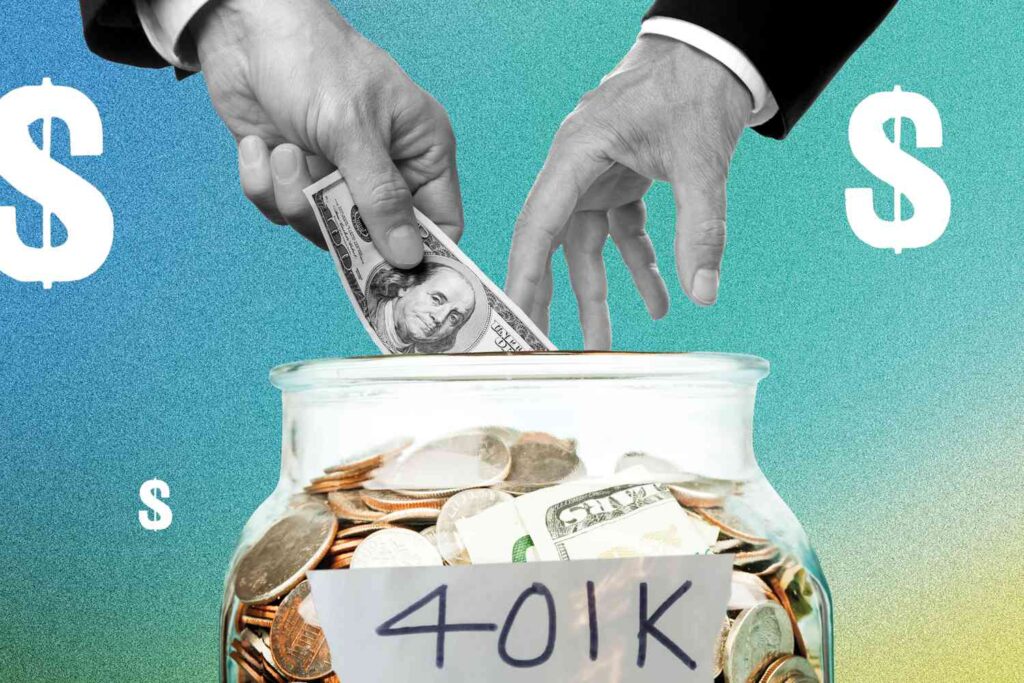KEY TAKEAWAYS
- The percentage of employees in 2024 who took out a hardship withdrawal from the retirement account more than doubled compared to 2018.
- The costs of emergencies also continue to rise, from unexpected car repairs and hospital stays to an increased number and severity of natural disasters.
It is becoming increasingly difficult for many Americans to accumulate sufficient savings, and many struggle to afford emergency expenses, especially as the costs for things like home repairs or hospital stays increase faster than general inflation.
Workers are having to find alternative ways to afford these unexpected costs, such as taking out loans or reducing their retirement savings. At the end of 2024, about 5% of employees had taken a hardship withdrawal from their retirement savings account, compared with the 2% of employees who did this in 2018, according to Fidelity Investments data.
All withdrawals from a traditional individual retirement account (IRA) or a 401(k) are subject to standard income taxes. If a withdrawal is made before the age of 59½, a 10% penalty tax is levied on the amount distributed. However, if an early withdrawal is made based on a hardship, defined as “an immediate and heavy financial need,” the money taken out is not subject to the additional tax.
Why This Matters to You
While a hardship withdrawal does not come with a penalty, it shrinks your retirement savings—and unlike a 401(k) loan, it cannot be paid back. Taking an early distribution from your retirement account can delay when you can retire or leave you with fewer funds in later years.
With inflation remaining high in 2025, it has become increasingly difficult for Americans to set aside money for an emergency savings account. In 2024, 13% of adults reported that they would be unable to pay a $400 emergency expense by any means, and 37% said they would cover the expense by borrowing money or selling something, according to the Federal Reserve’s most recent report on the economic well-being of U.S. households.
What Americans do have in their savings is not keeping up with the increasing costs of unexpected expenses, such as a car breakdown, a surprise medical bill, or damage to their home.
Vehicle Repairs
The costs for vehicle maintenance and repairs rose by 7.7% in September compared to the same period last year. That is above the year-over-year increase of 3.0% in general inflation during the same time period. Compared to five years prior, the cost of car repairs has risen by nearly 44%, according to CPI data.
Since the COVID-19 pandemic, when supply chain disruptions led to increased part costs, repairs have surged. The cost of car repairs in early 2025 is $838, according to data from Cox Automotive. More recently, President Donald Trump’s tariffs on steel, aluminium, and imported car parts are expected to raise the cost of car repairs even more.
Health Emergencies
The cost of a hospital stay has increased by almost 25% compared to five years ago, and hospital services costs over the past year have grown almost twice as fast as general inflation, according to CPI data.
Much of the cost increase is attributed to the challenges that many hospitals are facing, including workforce shortages. Labor is the largest category of hospital spending, and as hospitals attempt to fill their staffing gaps, they are increasing wages to retain and recruit workers, according to an analysis by the American Hospital Association.
In addition, Medicare and Medicaid benefit amounts have generally lagged behind inflation, making it harder for these patients to afford their health care and leaving hospitals to make up for billions of dollars in underpayments, the AHA said. These funding gaps could also be worsened by upcoming cuts to the Medicaid program.
Home Repairs
Natural disasters have become more frequent and destructive, resulting in homeowners spending more money on repairs.
The majority of home contractors, which include HVAC, electrical, plumbing, and roofing, said they have to raise their prices due to tariffs increasing the cost of home repair items. From July 2024 to July 2025, the cost of home reconstruction, which includes materials and labor, increased by 4.2%, according to a recent report from Verisk, a data analytics and risk assessment firm.
